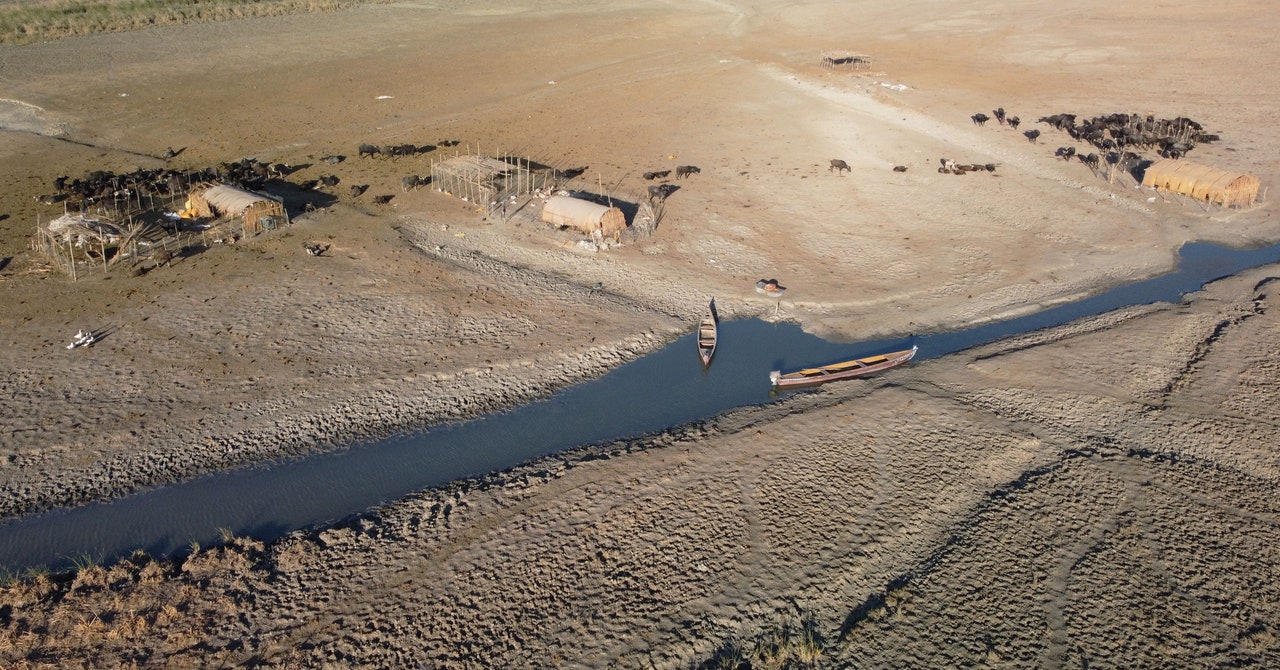
From the start of last summer until late October, more than 2,000 families were forced to abandon their homes due to the retreating marshlands, according to the FAO’s El-Hajj Hassan. Some of the displaced have moved to areas of marshland that still have water, while others have abandoned their traditional way of life and moved to cities like Basra or Baghdad.
Tensions among those who remain in the marshes are rising, and security consultants believe that water scarcity, and specifically the disappearance of the marshlands, could affect national security. According to Eimear Hennessy, a former risk analyst for G4S Consulting, “The thousands of people that have been uprooted and impoverished by the ongoing crisis in the Mesopotamian Marshes are likely to be more susceptible to recruitment by non-state actors”—militias and terrorist groups—“that make promises of an attractive future.”
According to Nature Iraq, the recent drying of the marshes has triggered a collapse in wildlife diversity, with populations of Binni, a brownish-gold fish highly prized by Marsh Arabs, plummeting. “Two thousand officially registered fishermen have lost their source of income and are now unemployed,” Saleh Hadi, the Dhi Qar agriculture directorate, stated in October.
Before the drought, the marbled teal duck, listed as near threatened by the International Union for Conservation of Nature, appeared to be thriving in the marshes, as was the endangered Basra reed warbler and the native Iraq babbler. But with water levels dropping, Nature Iraq said, these birds are far less frequently seen.
Livestock are suffering too. Water buffalo, who graze in the rivers, now have a hard time finding clean water and sufficient food; thousands have died due to disease and malnutrition. “The lower water levels are having a devastating impact on the buffalo farmers,” said Samah Hadid, a spokesperson for the NRC. “The buffalo breeders that we are talking to are becoming increasingly desperate.”
As the outlook worsens for communities in Iraq’s marshlands, NGOs are promoting actions that could reduce the impact of drought, including investment in water filtering and treatment systems for areas with high salination levels. They are pushing Iraqi authorities, at the national and regional level, to collect more data on water flows and on the impacts of scarcity, and to improve the regulation of aquifers to prevent over-pumping, which diminishes groundwater quantity and quality.
The Iraqi government is providing some grain farmers with salt-tolerant wheat; breeders are working on drought-tolerant sugar beets; and academics are advocating for programs that offer conflict-management training to communities that are struggling to equitably share water resources.
For years, Iraq has been negotiating with its upstream neighbors to allow more water to flow across its border, but the situation has not improved. In January 2022, Iraq announced it would sue Iran in the International Court of Justice for cutting its water access, but the case has not progressed. Last July, Iraq asked Turkey to increase the amount of water that flows south into Iraq. Both sides agreed that an Iraqi “technical delegation” would visit Turkey to evaluate water levels behind Turkish dams, but Turkey did not accept responsibility for Iraq’s water shortages. Instead, Turkey’s ambassador to Iraq, Ali Riza Güney, accused Iraqis of “squandering” their water resources and called on the nation to reduce water waste and modernize its irrigation systems.
The new year is expected to bring below-average rainfall to the region, according to the UN’s World Food Programme and the FAO. With worsening climate-change impacts and no foreseeable improvement in water management, the outlook for Iraq’s Mesopotamian Marshes and the communities that rely on them looks bleak.


